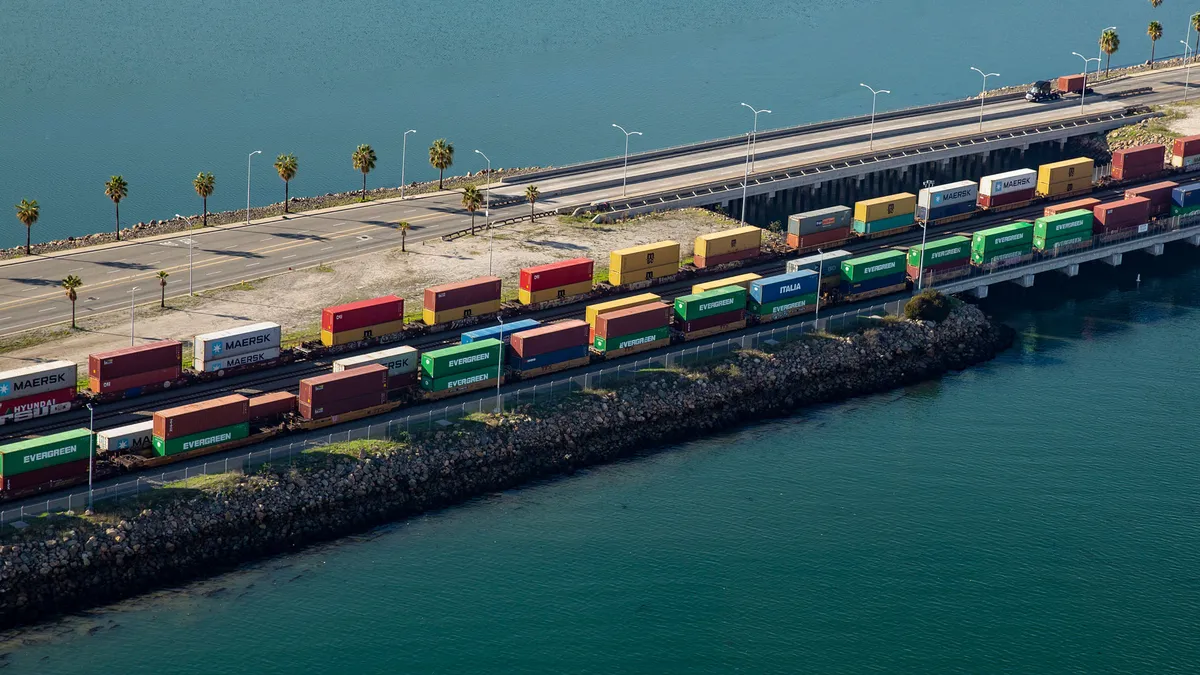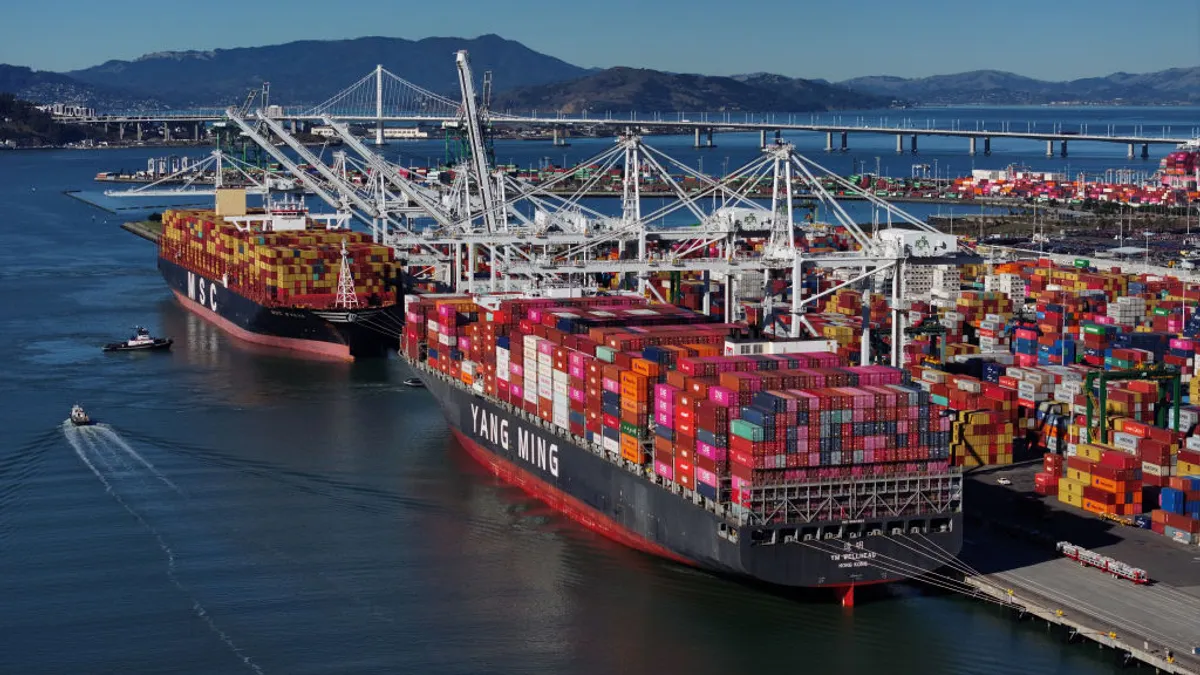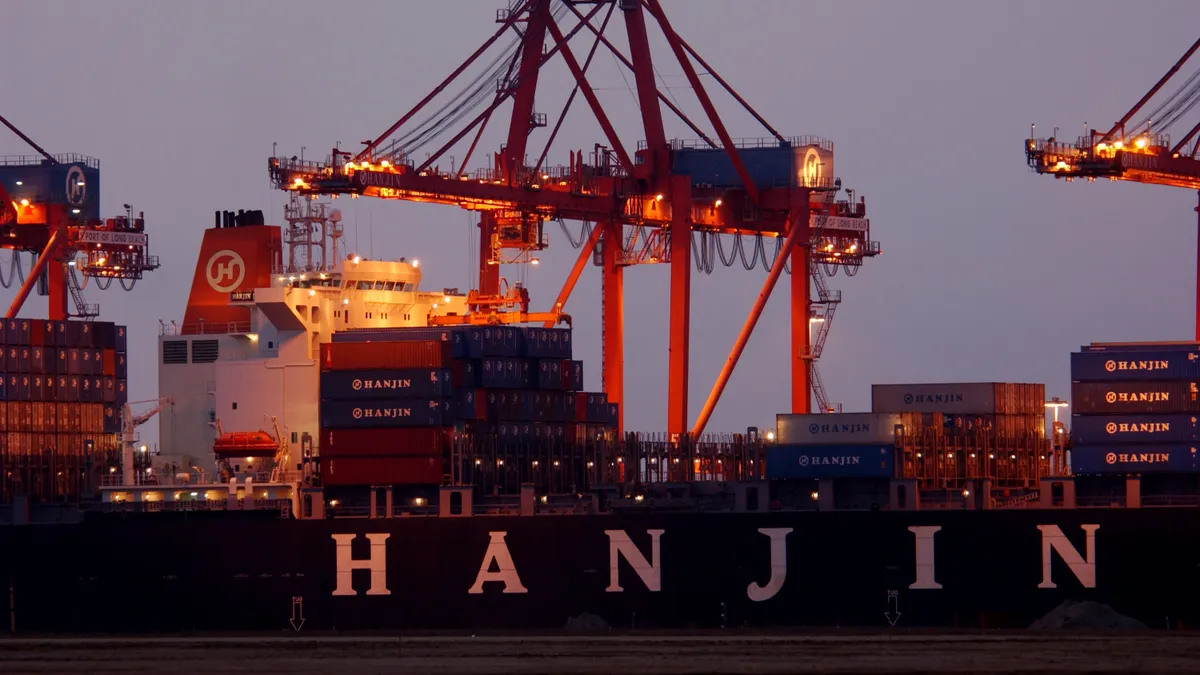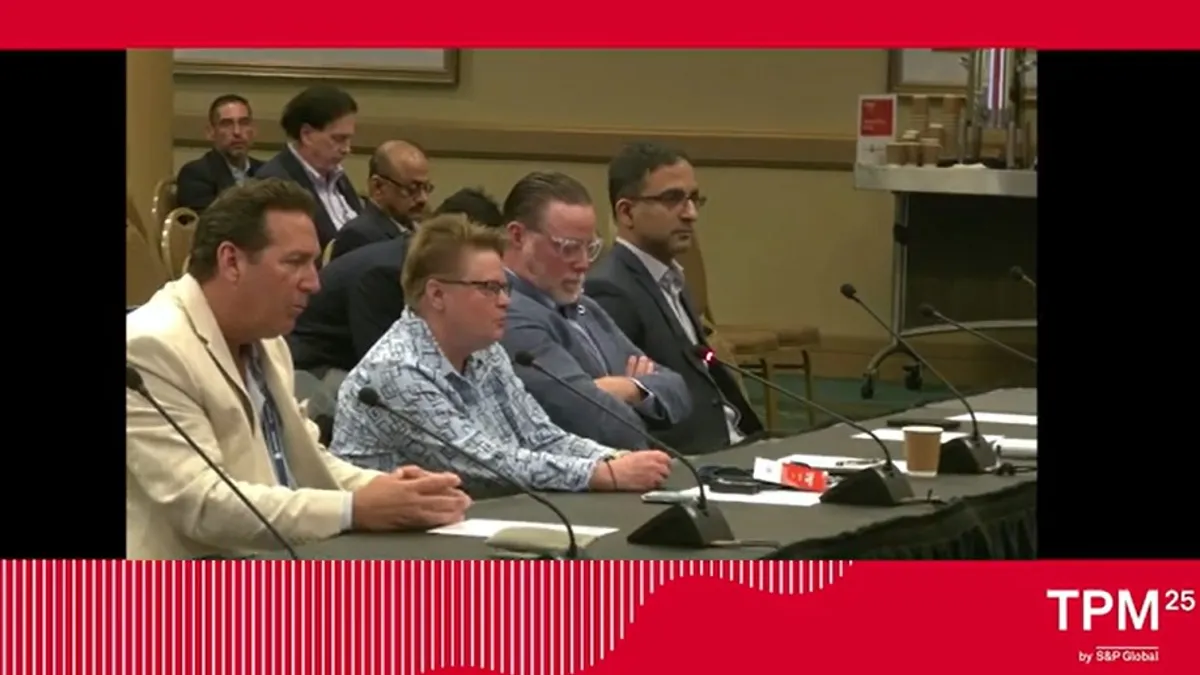An uptick in container volumes on the U.S. West Coast is causing some challenges for rail operations, experts told Supply Chain Dive.
The Port of Los Angeles and the Port of Long Beach sustained spikes in cargo volume related to peak season, East and Gulf Coast port strike mitigation efforts, and anticipated tariff increases. But now rail cargo seems to be facing higher dwell times, among other issues.
“Container traffic entering the West Coast is still challenged today and experiencing volumes booked to avoid the Red Sea issues and East/Gulf labor union activity, which continues to test capacity in those markets,” according to a report from ITS Logistics.
Although some West Coast ports have not been as dramatically impacted, experts caution shippers to prepare to avoid congestion
How rail operators are adjusting
Rail dwell times at the Port of Long Beach were at about four days as of Nov. 12, according to the port’s operations dashboard. Such a timeframe is similar to what the port experienced in September, a spokesperson told Supply Chain Dive in an email. They added that a four-day dwell is a good sign of fluidity, especially during times of high volume.
Meanwhile, the Port of Los Angeles’ on-dock average rail dwell times were close to eight days as of Wednesday, according to the port’s operations report. Dwell times typically need to be between two and four days, Port Director Gene Seroka told the press in an August media briefing.
The Port of Oakland is not seeing higher dwell times, according to a port spokesperson. However, several other ports outside of Southern California are facing elevated rail ramp operations, ITS Logistics reported.
With longer processing times in at multiple ports, rail operators are working diligently to keep goods moving.
“We’ve worked closely with customers to temporarily manage the flow of containers, it was effective and fluidity is increasing, but we’ve got a way to go."

Kenny Rocker
Union Pacific EVP of Marketing and Sales
For example, BNSF Railway has partnered with a drayage provider to stand up a staging yard near its Hobart Intermodal Facility in Los Angeles. The space helps provide additional capacity for international cargo volume, according to a company spokesperson.
“Our container yard capacity is ready at key destination facilities to facilitate unloading of trains,” the spokesperson said.
BNSF has navigated several capacity challenges this year, including diverted East Coast volumes and a lithium battery fire that forced a temporary shut down at the ports in Los Angeles and Long Beach, according to the spokesperson. Such disruptions can take days or even weeks to unwind, they added.
Union Pacific is also working to restore network fluidity and manage the double-digit growth in international volume it experienced recently, particularly in the Los Angeles area.
“We’ve worked closely with customers to temporarily manage the flow of containers, it was effective and fluidity is increasing, but we’ve got a way to go,” Kenny Rocker, Union Pacific EVP of marketing and sales, said in an Oct. 31 announcement
What shippers can do
Shippers are opting for alternative strategies such as using cross-dock facilities for their cargo to mitigate rail congestion — an option not typically sought when dwell times are closer to normal, Paul Brashier, VP of global supply chain at ITS Logistics, told Supply Chain Dive in an interview.
Using cross-dock facilities is expensive and can lead to more touch points in freight handling, he said. In contrast, when using rail, containers go straight from ship to train before delivering to the distribution center.
Other shippers may opt for air freight as an alternative despite being more expensive and typically used for high value commodities, Brashier said.
“I've also noticed that some folks are bringing stuff into different points into North America to stay away from [Los Angeles],” he added, identifying western ports in Mexico and Canada as popular options.
Shippers can also sidestep rail headaches by pulling freight forward and prioritizing optionality to divert cargo to other ports, including those on the East Coast, while seeking alternative modes of transport, according to D'Andrae Larry, head of intermodal at Uber Freight.
For example, some shippers have leveraged trucking to transload cargo in 53-foot domestic boxes instead of moving a container all the way inland.
“We're still benefiting as a country from plentiful truck supply. And so right now, again, comparing it to a couple of years ago, there is no shortage of truckers available to carry your goods once you get into North America,” Larry said.
While it is uncertain when rail congestion on the West Coast may ease, Brashier thinks it’s more likely to occur during Q1 2025, assuming no further disruptions occur. However, reaching such an environment remains uncertain, especially after the International Longshoremen’s Association once again halted negotiations with the United States Maritime Alliance this week over automation concerns.
Editor's note: This story has been updated to correct Paul Brashier's job title.






















